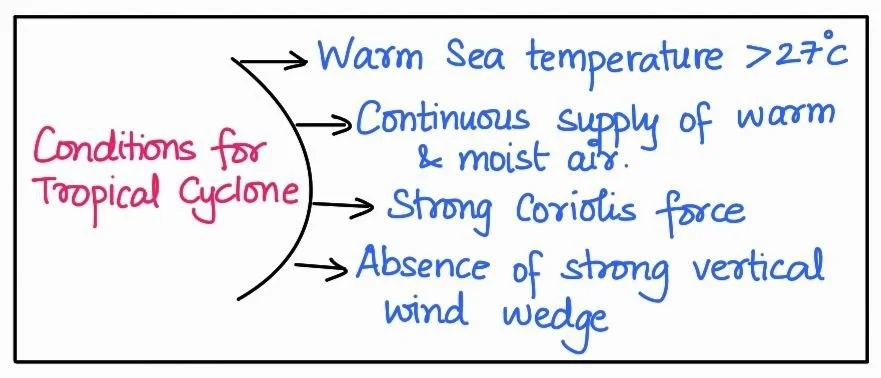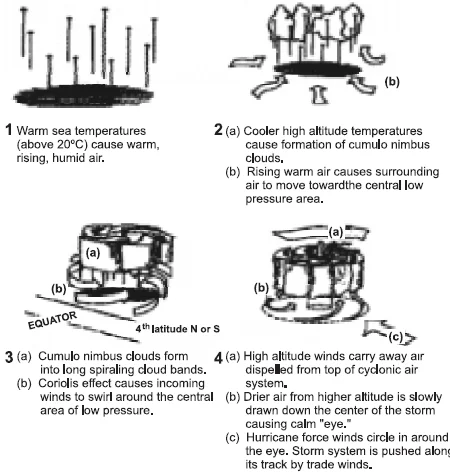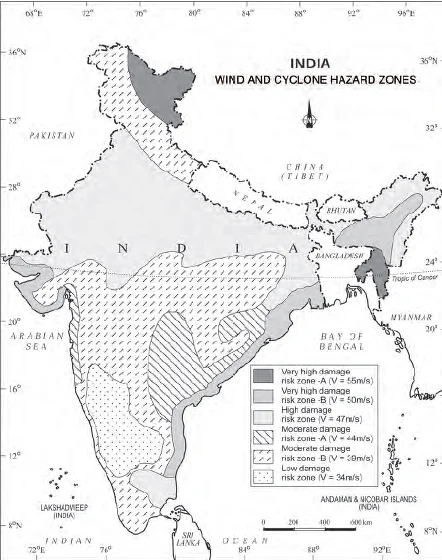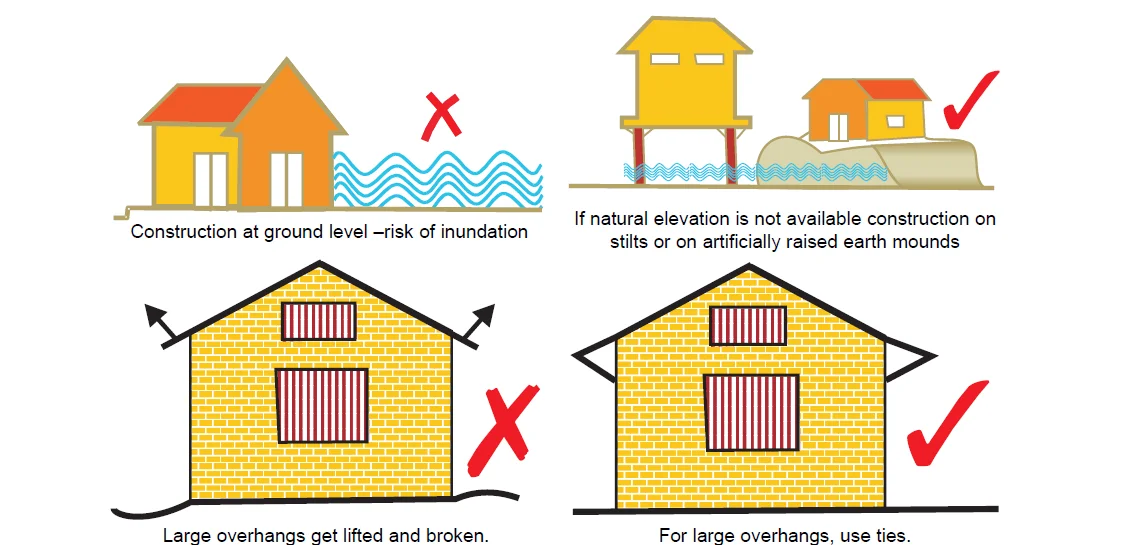![]() 21 Jun 2024
21 Jun 2024
Powerful Tropical Cyclones: Winds, Pressure, and Heat
Tropical cyclones are intense low-pressure areas confined to the area lying between 30°N and 30° S latitudes, in the atmosphere around which high-velocity winds blow. Horizontally, it extends up to 500-1,000 km and vertically from the surface to 12-14 km.
It is energised by the release of latent heat on account of the condensation of moisture that the wind gathers after moving over the oceans and seas.

|
POINTS TO PONDER Indian Coasts are frequently hit by Tropical Cyclones causing large scale destruction. However, the frequency as well as the intensity of the Cyclones in the Bay of Bengal are much higher than those in the Arabian sea. What do you think might be the reasons behind this? Recently an increasing trend has been noticed in the Arabian sea. Find out the reasons for such a change. |
|---|


Stages of Cyclone Formation

Wind and Cyclone Hazard Zones

Safe Construction Practices
Thus, Understanding the nature of tropical cyclones and implementing effective preparedness, early warning systems, and infrastructure development are critical in reducing the risks associated with these powerful storms.
| Must Read | |
| Current Affairs | Editorial Analysis |
| Upsc Notes | Upsc Blogs |
| NCERT Notes | Free Main Answer Writing |
<div class="new-fform">
</div>